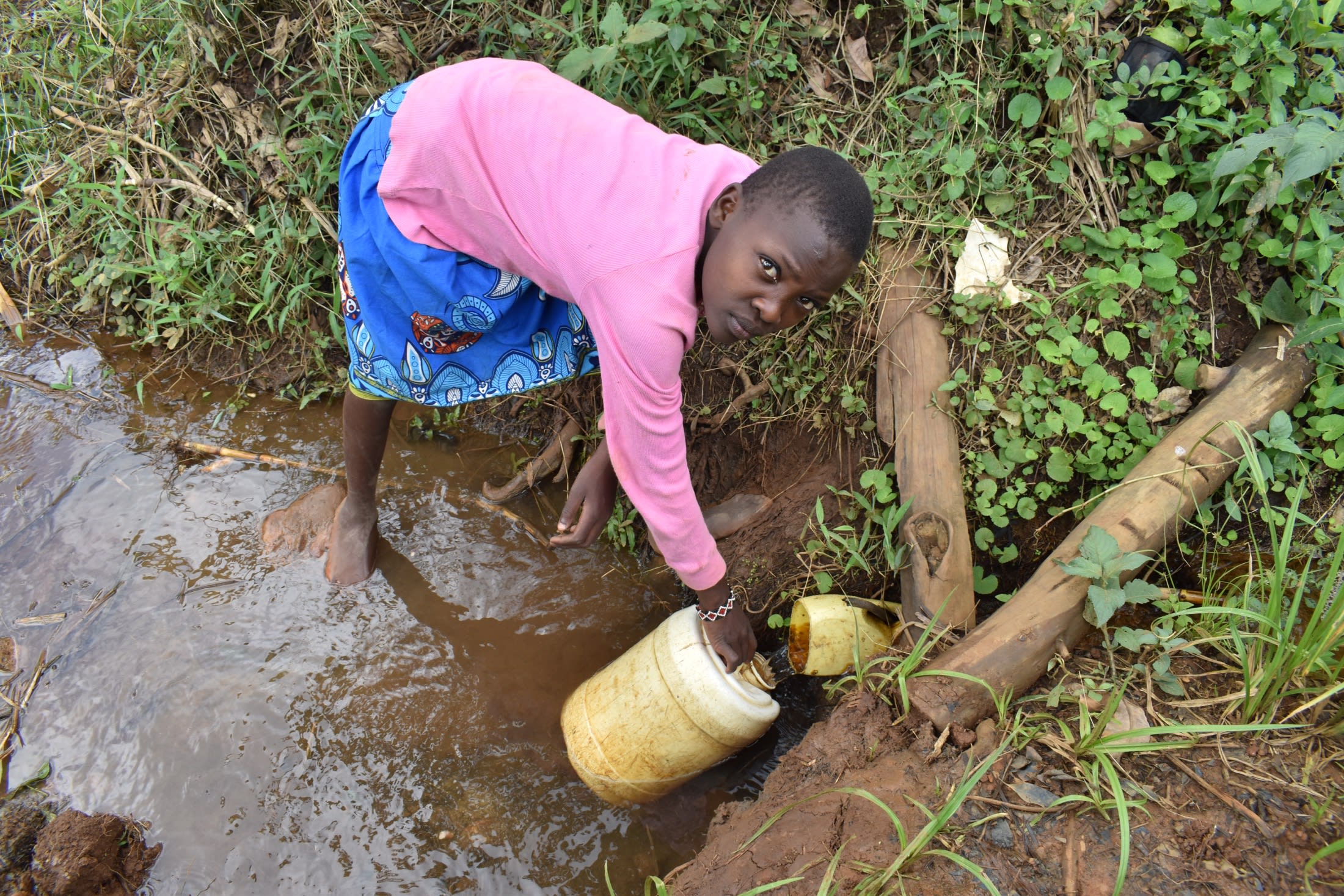The water of Mukachelelwa Spring is making Muhoni Community's 400 people sick.
The spring is open to all sorts of contamination and not safe for drinking. Community members complain of coughs, skin rashes, and other water-related diseases like typhoid and cholera.

When we asked 58-year-old farmer Florence Mukachelelwa (shown above) how the water situation affects her, she said, "This water point has caused some harm to my grandchild's health. She is always on typhoid medication which is very expensive. It's hard to follow up on a child to ensure that she drinks only the boiled water. Whenever she takes water from this water point at the neighbour's house, she falls sick."
Some 842,000 people are estimated to die each year from diarrhea as a result of unsafe drinking-water, sanitation and hand hygiene. - WHO
But, believe it or not, illness from drinking the contaminated water is not Muhoni's only water issue. Simply accessing the spring is a real challenge.
The environment around the spring is very wet and slippery because water seeps from several different spots. Steep slopes on two sides of the spring make navigating difficult, especially with heavy, full containers of water, which inevitably leads to accidents. Once they safely make it down the hill collecting water still requires stepping into the spring, bending over, and placing a jug into the water under an improvised spout made from a plastic jug.

"Fetching water is one of the hardest tasks for me. Accessing the spring, collecting the water, then getting out of the spring is not easy for me. I prefer that my mum sends me to fetch firewood from the forest than go fetch water," said 11-year-old Esther collecting water in the photo above.
A protected spring will not only provide Muhoni's people with safe drinking water but also make a time-consuming, risky chore into an easier task they can do at any time.
What We Can Do:
Spring Protection
Protecting the spring will help provide access to cleaner and safer water and reduce the time people have to spend to fetch it. Construction will keep surface runoff and other contaminants out of the water. With the community's high involvement in the process, there should be a good sense of responsibility and ownership for the new clean water source.
Fetching water is a task predominantly carried out by women and young girls. Protecting the spring and offering training and support will, therefore, help empower the female members of the community by freeing up more of their time and energy to engage and invest in income-generating activities and their education.
Training on Health, Hygiene and More
To hold trainings during the pandemic, we work closely with both community leaders and the local government to approve small groups to attend training. We ask community leaders to invite a select yet representative group of people to attend training who will then act as ambassadors to the rest of the community to share what they learn. We also communicate our expectations of physical distancing and wearing masks for all who choose to attend.
The training will focus on improved hygiene, health, and sanitation habits in this community. With the community's input, we will identify key leverage points where they can alter their practices at the personal, household, and community levels to affect change. This training will help to ensure participants have the knowledge they need about healthy practices and their importance to make the most of their water point as soon as water is flowing.
Our team of facilitators will use a variety of methods to train community members. Some of these methods include participatory hygiene and sanitation transformation, asset-based community development, group discussions, handouts, and demonstrations at the spring.
One of the most important issues we plan to cover is the handling, storage, and treatment of water. Having a clean water source will be extremely helpful, but it is useless if water gets contaminated by the time it is consumed. We and the community strongly believe that all of these components will work together to improve living standards here, which will help to unlock the potential for these community members to live better, healthier lives.
We will then conduct a small series of follow-up trainings before transitioning to our regularly scheduled support visits throughout the year.
Training will result in the formation of a water user committee, elected by their peers, that will oversee the operations and maintenance of the spring. The committee will enforce proper behavior around the spring and delegate tasks that will help preserve the site, such as building a fence and digging proper drainage channels. The fence will keep out destructive animals and unwanted waste, and the drainage will keep the area's mosquito population at a minimum.

 Protected Spring
Protected Spring
 Rehabilitation Project
Rehabilitation Project





































